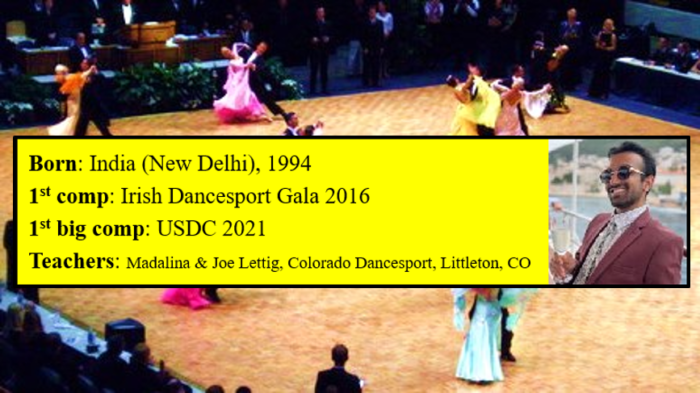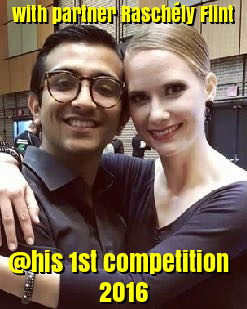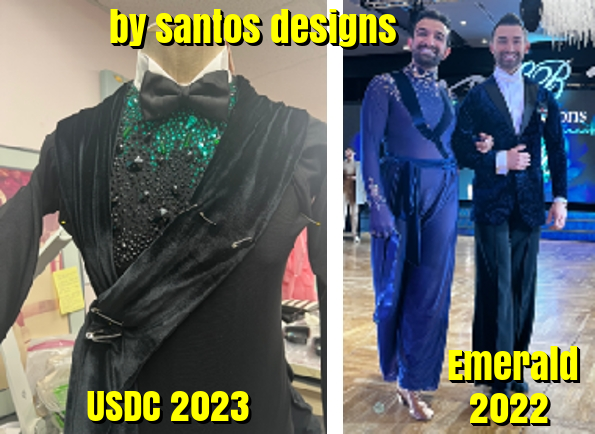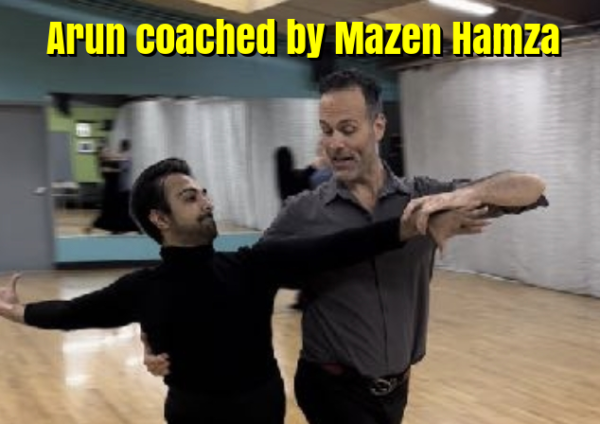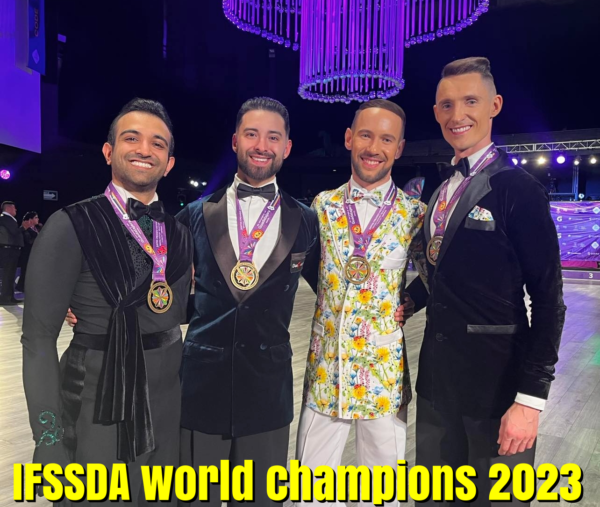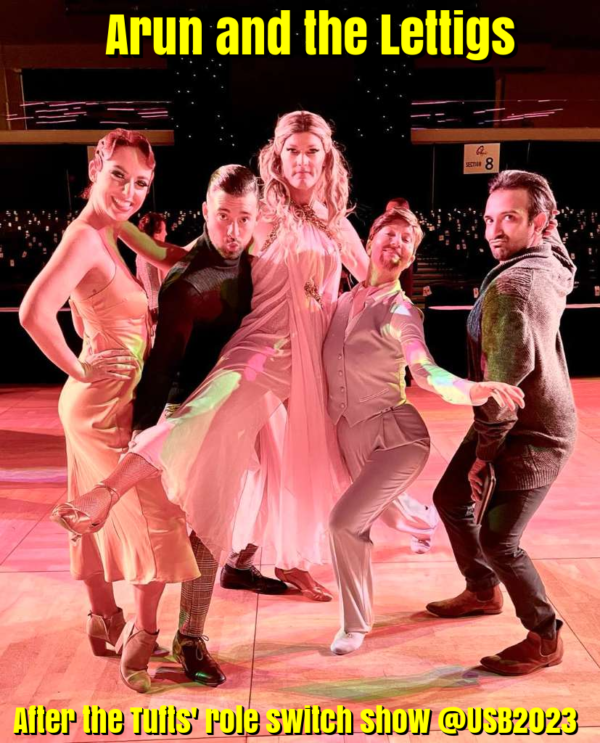Arun dances as (1) a leader (or “man”) in Ballroom and (2) a follower (or “woman”) in Smooth.
Why and how does he do it?
1. Introduction
Arun had little exposure to ballroom dancing for most of his life, other than tuning in occasionally for a DWTS episode on TV. His only exposure to professional dance came primarily from his work as a professional pianist. He spent many seasons as a rehearsal pianist for a myriad of ballet companies.
Never in his line of work did he imagine he would one day be able to move his body with any coordination. This changed after Arun decided to pursue further education in his home state of Missouri. In Spring 2016, Arun joined the competitive ballroom team at the University of Missouri, Columbia (MIZZOU). He has been helplessly addicted to ballroom dancing since then …
2. Missouri
Arun studied piano performance on the East Coast for four years. He felt he needed a change of pace and was not entirely sure of his decision to pursue a performing career. He was already an experienced teacher. However, he wanted to pursue a more diverse education. That brought him to work and study at MIZZOU. There he needed a community and healthy activity for his free time. He took a few social dance lessons out of boredom in St. Louis. Then, it was just a matter of time before Arun found himself on the competitive team in his new home.
2.1 Collegiate dancing
Within weeks of his first group lesson and team practice, Arun had been asked to dance in the Newcomer Smooth and Rhythm categories of collegiate competition at Notre Dame University with a more experienced dancer on the MIZZOU team, who was graduating the same month. He dove right in and found himself in a huge competition with 40 couples in the Newcomer divisions. Having worked hard for three weeks on routines that were comprised of two or three figures, he found himself in the finals, winning a few events.
This initial rush of excitement spurred a serious dedication to continuous improvement. In the Summer of 2016, he began taking private lessons, thus starting his journey as a serious ballroom dancer.
2.2. Initial exposures to pro/am and professional dancing
After his first partner left upon her graduation, Arun was immediately searching for a new partner willing to spend time and money to improve. He quickly found that in an experienced teammate named Jamie Daylor.
They danced together for about two years, representing MIZZOU at many major Collegiate events. Throughout this period, they studied weekly with Ashley Mayer and Larinda McRaven (an NDCA Adjudicator and US Open Professional Smooth finalist), practicing daily in their free time away from school and work.
Arun also resumed taking lessons with Agnieszka Strojek, the first teacher he took some lessons with in St. Louis, with the intention to dip his toes into pro/am. During this time, Arun would spectate for the first time and see pro/pro dancing at the NDCA competitions in Missouri: St. Louis Star Ball (now Gateway Dancesport Championships) and Heart of America Dancesport Championships. These first views of the highest levels of ballroom dancing truly had a formative effect on Arun’s constant desire to improve and dream of greater dancing goals.
3. Hiatus and relocation
In Fall 2018, Arun had to suspend dancing and spend time on physical recovery due to an injury and some life circumstances. However, his desire to return to a serious dancing life never dwindled—he patiently waited for a new opportunity to resume dancing. That opportunity came after he took a new job and relocated to Denver, Colorado, in August 2020.
4. A new journey
Upon arriving in Denver, Arun found Colorado DanceSport, just south of Denver. Wanting to really take the opportunity to start from scratch and apply his life experience as a pianist, he began anew, dancing with Madalina Varlam Lettig, an experienced 10-dancer from Canada.
Working on Bronze in Smooth and Ballroom, Arun wanted to implement an important lesson he learned from his time with Ms. McRaven: Knowing both sides properly is necessary to lead your partner better. He had no idea where this would take him along his competitive pro/am journey.
After two successful competitions with Madalina, Arun began taking lessons with Joe, Madalina’s professional partner and husband. He had no real intention of competing seriously—Arun just wanted to expand his leading ability by dancing as a follower!
However, within two months of lessons with Joe, they had their first outside coaching and were encouraged by their main mentor, Harmony Munroe, to compete at the local NDCA event, Colorado Star Ball. It was the start of Arun’s constant and continuing discovery of how to successfully compete as a follower, developing his brain and body to a new role …
4.1 Approach to learning
Arun quickly discovered that learning a new role often felt like learning an entirely new dance with its own responsibilities and functions. So, he took the same approach as always: focus and work hard at fundamentals and not “reinvent the wheel.”
In both Ballroom and Smooth, Arun and his teachers spend much time in the studio, dancing syllabus figures and fundamental actions, thus discovering ever more layers and aspects of the basic mechanics. He also borrows some realizations from his professional piano experience—always practice slowly and daily, be diligent and organized with your time, and never forget that everything complicated is made up of simpler parts.
4.2 First reactions
Arun and Joe knew that going into their first competition, they should not expect anything, as few had competed in this way in the NDCA since the organization had altered its rules to allow anyone of any gender to compete in any role. Their first competition in June of 2021 garnered a 2nd place finish in Open Smooth. It set the stage for a mixed bag of reactions, ranging from blatant homophobia to encouragement and gratitude of the highest degree. However, those who held openly negative opinions seemed to be few in quantity and even fewer among the judges. By the end of their first six months on the competitive circuit, Arun and Joe had won two championship-level events in Open Smooth and were finalists at both USDC 2021 and OSB 2021.
Arun, as a leader in Ballroom, continued to compete successfully with Madalina in 2021. They placed 3rd in Gentlemen’s Open Ballroom (A) at USDC 2021.
A consistent experience for the trio, many judges, coaches, and spectating professionals confirmed that presenting Arun as a follower in Smooth and as a leader in Ballroom and presenting them with equal respect and quality made all the difference in their competitive success and acceptance.
4.3 Costuming
Arun presents himself as a follower in a variety of looks, wearing unique and new outfits that allow him to distinguish his following role with color, fabric, stones, and movement, always true to his male gender but attempting to fit in amongst a sea of dresses. Working with the amazingly talented Joey Santos, Arun felt from the start that he did not want to dance in matching tail or Smooth suits but rather bring a new type of couture that could blend the line for both roles and all genders. Going through many prototypes, he now dances in several custom body suits that follow the general rule: simple and clean lines that allow the dancing to be seen most clearly.
4.4 Maintaining both sides
Dancing both roles in two styles has required Arun to maintain a regular practice schedule. He feels extremely grateful to have many coaches who span all styles, eras, and schools of thought. This way of being coached has been, at times, both overwhelming and difficult to compartmentalize, but it has paid off in the long run, contributing to Arun’s development from many angles and opinions. Furthermore, partnering with active professionals has allowed Arun to access a rigorous schedule of traveling, learning, working with visiting coaches, and competing regularly.
4.5 Switching mindsets
Dancing both roles in two styles has also meant that Arun works hard at being able to switch roles and responsibilities both mentally and physically on a dime, as often as he has back-to-back lessons. Additionally, Madalina and Joe will often make Arun switch roles during a lesson to feel what he is asking of his partner in any given context. Surprisingly difficult, Arun has found that one must find a balance between understanding how the two roles work together while maintaining a clear idea of the individual jobs and roles that comprise a functioning partnership.
5. Competition results
Since beginning his pro/am journey, Arun and the Lettigs have achieved some good results at major competitions.
5.1 Arun and Madalina
- 2-time Gentlemen Open Ballroom Champions (A) at the USDC (2022 and 2023).
- 2-time Gentlemen Open Ballroom Champions at the OSB (2022 and 2023).
- Undefeated Open Ballroom Champions (A) on the MIB national circuit.
- 3-time Open Ballroom finalists (A) at the USDC (2021, 2022, and 2023).
5.2 Arun and Joe
- 3-time Open Smooth semi-finalists (A) at the USDC.
- 3-time Open Smooth semi-finalists (A) at the OSB and a finalist in 2021.
In October 2023, Arun and Joe competed in the World Same-Sex DanceSport Championships, held in Guadalajara, Mexico. Although this was their first time competing in a true same-sex division (all other competitions were in traditional events. with traditional couples), Joe and Arun claimed the Open Smooth title, becoming IFSSDA World Smooth Champions, a title they will hold until 2026.
6. Theories on roles in ballroom dancing
Arun has come to realize several facts that have served him well in his time as both a traditional competitor and one that competes in a same-sex partnership:
- Basics, basics, and basics
- Traditional gender roles need not apply (with one condition)
- Consistency is key.
6.1 Basics, basics, and basics
Constantly working on fundamental figures and mechanics both in practice and with an academic effort based on Alex Moore’s grey bible has served Arun in troves. Finding confidence in his movement and in the logic from which it is informed, Arun can go into a competition with his nerves at a baseline ease, knowing that an underlying fundamental technique can be accessed. He also finds it fruitful to spend portions of every lesson dancing the basic figures, moving through syllabus actions in both styles. His core belief is that quality basics will always take the cake. After all, his first podium placement in a full Open Smooth final was done with Closed-Silver routines.
6.2 Traditional gender roles need not apply (with one condition)
The one condition is that clear, objective quality must be omnipresent. While this is an ideal standard for all couples, it is especially true for those wanting to find success and acceptance in any part of the ballroom industry as an alternatively gendered couple.
Arun’s ever-constant desire to grow his physical tool belt from which to build his quality comes from this fact: any dancer who plans to challenge the norms must do so with respect for the traditions. There must be an integrity-based ethic that does not rely on superficial or even cultural gender roles but rather explores deeper physical and psychological aspects between two human beings in a leading and following relationship. Arun and Joe never refer to a masculine-feminine scale to discuss their movement or interpretation of sound or character – They focus on using dynamics and texture to color a baseline quality movement into a full performance-ready product, namely, one that can emotionally and artistically speak to a wider audience.
6.3 Consistency is key
Arun understands consistency deeply from his experience as a professional pianist. Practicing thoughtfully, efficiently, productively, and daily is a lifestyle that Arun is accustomed to and enjoys. He has found it a tremendous advantage in his dancing. Although his life as a dancer has been relatively short in time, he has found that applying practice and learning habits as a pianist allowed him to move quickly through the competitive ranks. It gave him regular placements amongst the top pro/am competitors in the country, many with decades more experience under their belt. Nothing can beat time and long-term experience, but anyone and everyone can always improve the efficiency and efficacy of his/her time. This will expedite more and more of the life-long journey, thus achieving the ever-changing and growing goals!
7. The other side of the industry
Two aspects: (1) helping run competitions and (2) a hometown vision. To briefly highlight each …
7.1 Helping run competitions
Arun quickly found joy in working at competitions in a multitude of different roles, from running judging sheets, managing awards, deck captaining, ballroom coordinating, working in the office, and set-up and tear-down. He can be found regularly at competitions, helping organizers produce smooth and timely competitions while learning every aspect of the competition industry from the field’s most experienced specialists. For example, one of his favorite things has been getting to know the Music Directors of the industry. He loves discovering new music in their libraries and discussing his favorite records with these industry experts who have seen shifts in music and, thus, shifts in the developments of ballroom dancing itself across decades.
7.2 A hometown vision
His greatest efforts are spent on his hometown competition in St. Louis: Gateway Dancesport Championships. Organized by his former teacher, Larinda McRaven, Arun finds immense local pride in learning from and helping Ms. McRaven in her efforts to upgrade this “regional” competition into a “national” one. Under her leadership, Gateway has found immense success in bringing the best dancers in the nation to the Midwest, putting St. Louis on the map for the entire world of ballroom dancing to see.
8. Summary
Arun’s highs and lows mirror that of any serious and ambitious dancer, regardless of their role(s): All have experiences with the highs of good results and lows of not-so-good results; all have gone through productive periods and periods of frustration with dance entirely; and all have felt the indescribable validation of a coach’s praise and felt the sting of their direct critiques full of brutal honesty. Through it all, those who persist and thrive can never lose sight of their internal motivations and pleasures from the craft.
Like any performance craft, ballroom dancing simply takes time, effort, persistence, access to good education, and a village of supporters for anyone to be successful. But Arun has set out to prove that anyone can do just that, and anyone can do that in any role s/he desires to dance. So far, his pro/am efforts are just the beginning for him, and he holds no ceiling to where his dancing could go for as long as his body and brain (and bank) allow!
9. Closing
Having already found competitive success at the national level, Arun has also found a lifelong purpose in his own dancing: to produce objectively quality dancing, both as a leader and as a follower.
